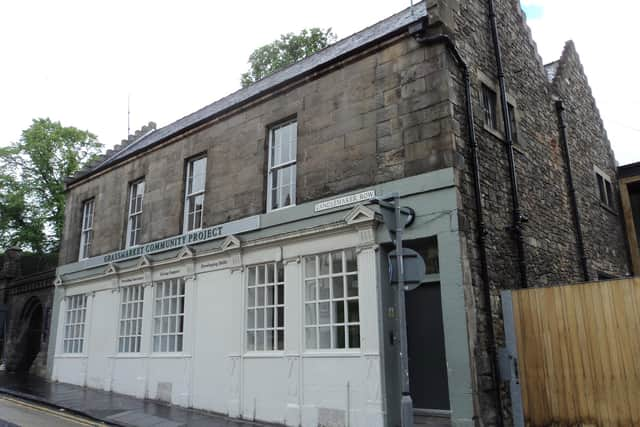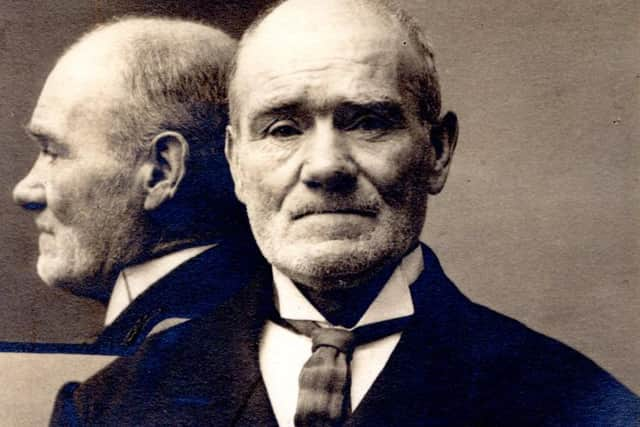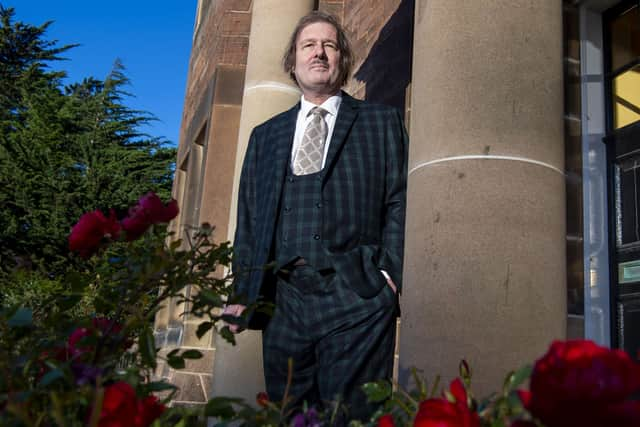Murder Houses of Edinburgh, by Jan Bondeson, part one - 88 Candlemaker Row
and live on Freeview channel 276
William Lamb was born in Glasgow in or around 1864. He lived there for 27 years before moving to Inverness. He was a steady and sober workman, married and started a family. In 1908, he was knocked down and run over by a motor lorry, losing both his arms; the right one by the shoulder and the left one with only a short stump remaining. Since Lamb had been reasonably popular in Inverness, there was a public subscription to purchase him a treadle barrel organ so that he would be able to make his living without seeking poor relief. He stayed there until 1919, when he left his wife and family and moved to Edinburgh, where he lived in the cheap lodging-house at 88 Candlemaker Row with a 41-year-old woman named Agnes White, who had left her husband. She was of very drunken habits, and Lamb also took to drink during his stay in the Capital.
During daytime, Lamb sat treading the barrel-organ with his feet; during the evenings and night-time, he stayed with Agnes in Room 11 on the first floor of the house, drinking and carousing.
Advertisement
Hide AdAdvertisement
Hide AdSince both were quarrelsome while in their cups, they were a cross to bear for the housekeeper Margaret Ross, who had her hands full keeping the rowdy lodgers in check. Agnes had more than once complained to one of the neighbours that they often quarreled and that he sometimes used to kick her cruelly.


On July 23 1919, Lamb sat playing his organ all day, dressed in a jacket and a kilt, before returning home where he and Alice both drank deeply. In the night, neighbours heard him cry out, “Get up and give me my pipe!”, and then a sound like a rhythmical stamping on the floor and a woman squealing with pain.
The following morning, Lamb walked down to the detective office in the High Street, telling Detective Sergeant Francis Horace Berry that Agnes was dead. Police Constable James Mathieson walked back with him; since there was blood on Agnes’ face and on the wall, and since Lamb’s clothes were liberally sprinkled with blood, he was taken into custody and charged with murdering her. The autopsy showed that Agnes had been brutally trampled to death.
On trial for murder at the High Court of Edinburgh in October 1919, the first witness was the husband of the murdered Agnes: the workman Andrew Stirling, who testified that he had left her due to her incessant whisky drinking. Bridget Lamb, sister of the prisoner, described his unhappy life after the accident, adding that he had a wife and three living children, all of whom he had left behind in Inverness.
Advertisement
Hide AdAdvertisement
Hide AdThe landlady Margaret Ross described the conditions in the crowded lodging-house at 88 Candlemaker Row, followed by a number of lodgers who had heard shouting from the murder room, or the sound of stamping feet. Mary Ann Kerr, who lived in Room 13, opposite Room 11, testified that Agnes had twice sought protection from Lamb inside her room.


The pedlar William Wilson, who inhabited Room 8 with his wife, had seen Lamb the morning after the murder; after telling him that his ‘wife’ was dead, he had started crying. When asked by Mrs Wilson how she had come to expire, Lamb had just said ‘I know nothing at all about it.’
The jury returned an unanimous verdict of guilty to murder and Lord Anderson sentenced Lamb to death. This extraordinary case arose a good deal of newspaper publicity: after all, it was not every day that an armless man was sentenced to death for murder. Lamb’s solicitor Lindsay Crawford Steele wrote a petition to the Secretary of State for Scotland, pointing out that Lamb had reported the death himself, and that he had experienced great sorrow and distress.
But the authorities were not immediately willing to respite Lamb, pointing out his crime had been a sordid and brutal one: he must have known very well what he was doing when kicking and trampling the life out of poor Agnes. It was presumed that the cause of the murderous attack was that she had been too drunk to bring Lamb his tobacco pipe. The execution of an armless man might well be a painful and repellent spectacle, but this argument should not be used to save a murderer’s life.
Advertisement
Hide AdAdvertisement
Hide AdIn the end, a respite was decided upon and Lamb now had to face imprisonment for life.


However, in June 1931, he was handed over to the care of the Governor of Barnhill Poorhouse in Glasgow. In March 1934, he escaped and tramped all the way to Edinburgh, where he asked a police official to return him to prison, which he liked better than this wretched poorhouse. He died from bronchopneumonia in April 1934.
As for the murder house at 88 Candlemaker Row, it was the Greyfriars Kirkhouse for a while, but is today home to the Grassmarket Community Project. It is now 86 Candlemaker Row, although there is no doubt it is identical to the 1919 murder house. It is identified as such by the database of Historic Environment Scotland, although the assertion that the upper floors had been demolished after the murder is a misapprehension: the court records speak of a ‘first flat’ [on the ground floor] and a ‘second flat’ [on the first floor, where Lamb and White lived]. Thus the murder house never had more than two inhabitable stories.
Tomorrow: The Curse on Tron Square, 1954
The Murder Houses of Edinburgh, by Jan Bondeson is now available here
A message from the Editor:
Thank you for reading this article. We're more reliant on your support than ever as the shift in consumer habits brought about by coronavirus impacts our advertisers.
If you haven't already, please consider supporting our trusted, fact-checked journalism by taking out a digital subscription
Comment Guidelines
National World encourages reader discussion on our stories. User feedback, insights and back-and-forth exchanges add a rich layer of context to reporting. Please review our Community Guidelines before commenting.